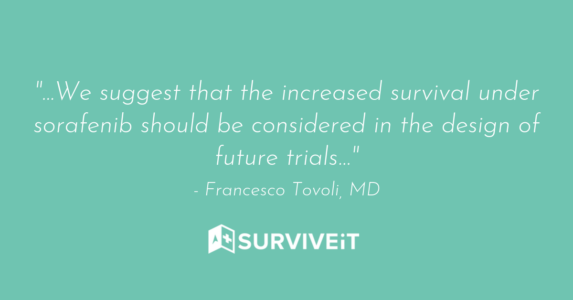10-Year Retrospective Study Shows Improvements in Liver Cancer Survival Rates

Hepatocellular carcinoma is the most common kind of primary liver cancer. Many people who have this type of tumor of the liver have previous liver disease. The tumour can affect the way the hepatocytes work in the body and considering how important the liver is in the functioning of the body, this can make a person very ill.
Recently, a study stated that liver cancer survival rates in patients with hepatocellular carcinoma (a form of liver cancer) have seen overall improvement due to the implementation of sorafenib. Here are some more details on the study
Liver cancer outcomes improving as physicians gain experience with Nexavar
Source: healio.com
Increasing physician experience in the management of Nexavar-related adverse events has led to longer treatment duration and improved overall survival rates in patients with hepatocellular carcinoma, according to results from a nearly 10-year retrospective study.
Francesco Tovoli , MD, from the University of Bologna in Italy, and colleagues wrote that while dose reduction and temporary interruptions can mediate adverse events related to treatment with Nexavar (sorafenib, Bayer), some patients are unable to avoid intolerable or severe adverse events even with modification.
To analyze the change in sorafenib management over time, Tovoli and colleagues reviewed data from 338 patients treated between January 2008 and December 2017. The researchers divided the patients into two groups: 154 patients who received sorafenib between 2008 and 2012, and 184 patients treated between 2013 and 2017.
All patients reported at least one adverse event after treatment initiation.
Compared with the first time period group, the second group had a longer median duration of treatment (5.8 vs. 4.1 months; P = .021), a lower median daily dose (425 vs. 568 mg per day; P < .001) and lower rates of permanent discontinuation (9.2% vs. 20.8%; P < .001).
Additionally, patients in the second time period group had higher rates of overall survival (12 vs. 11 months; P = .002) and higher rates of 2-year (28.1% vs. 18.4%; P = .003) and 3-year survival (14.6% vs. 6.8%; P = .037).
Multivariate analysis revealed Child-Pugh B status (HR = 2.093; 95% CI, 1.364-3.211), performance status (HR = 1.357; 95% CI, 1.043-1.765), macrovascular invasion (HR = 1.722; 95% CI, 1.331-2.622), alpha-fetoprotein of 400 ng/mL or higher (HR = 1.328; 95% CI, 1.024-1.724), the appearance of dermatological adverse events (HR = 0.624; 95% CI, 0.482-0.808), and period of treatment (HR = 0.728; 95% CI, 0.581-0.937) as independent predictors of overall survival for both groups.
“[Future] trials will be of critical importance in shaping the future therapeutic algorithms for the systemic treatment of HCC in the [near] future, and their results are eagerly awaited,” Tovoli and colleagues concluded. “Therefore, we suggest that the increased survival under sorafenib should be considered in the design of future trials, to minimize the risk of unintentional failure due to an underestimated sample size.” – by Talitha Bennett
Disclosures: Tovoli reports he is a consultant for Bayer AG. Please see the full study for all other authors’ relevant financial disclosures.
More About Hepatocellular Carcinoma & Liver Cancer Resources
If you have been diagnosed with HCC, you should ask your medical oncologist if sorafenib could be a treatment option for you.
Our resource library can offer you additional questions to ask your oncologist and more information.
